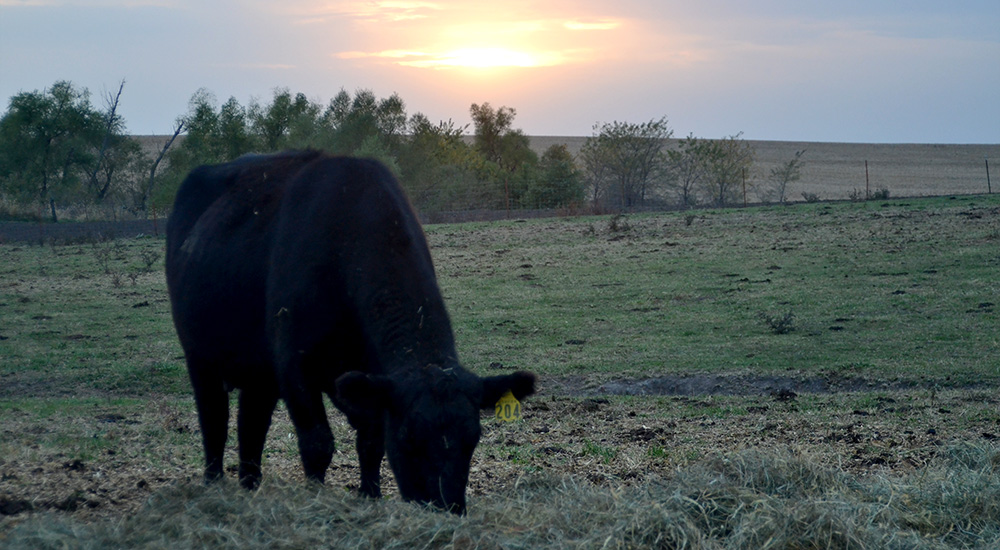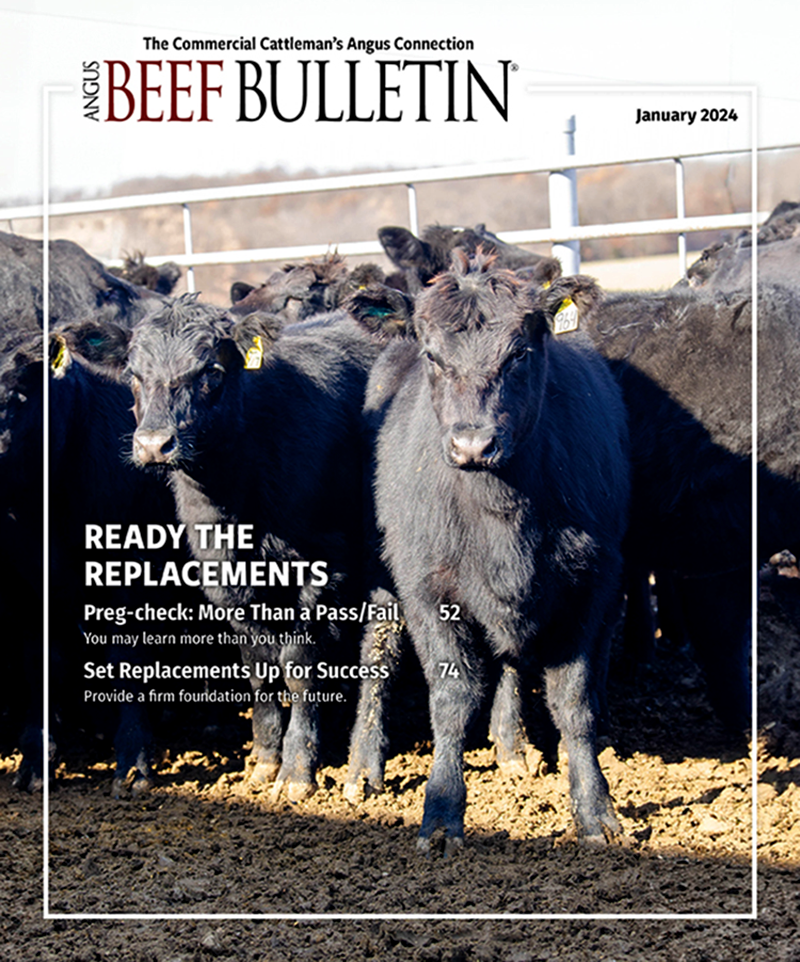
Beef Industry Outlook
Beef demand keeps prices up amid high supplies.
The beef cow herd expansion is slowing, and supplies of commercial beef production are up. Supply increases are moderating though, says Glynn Tonsor, professor in Kansas State University’s Department of Agricultural Economics. Beef production supplies increased by 6.4% in 2016 and 3.8% in 2017. Projections include a 3.3% increase in 2018, 1.7% in 2019 and 0.8% in 2020.
High supplies usually mean lower prices, but not so at the moment. He illustrates that in the third quarter of 2018, production was up 2%, with yearling prices up 1% and calf prices up 2%.
“The key to these surprising prices in 2018 is demand. Pork supply is expanding, too. There is a lot more meat protein available right now. Beef demand is important to price strength with high supplies. Exports are key, yet they are an ongoing arena of uncertainty,” Tonsor emphasizes.
He notes that the beef industry has already surpassed the export numbers expected for the year, so that buffers a bit of uncertainty at the moment. So far, the second quarter of 2018 shows a 0.4% increase in all-fresh beef retail demand over the same quarter of 2017.
While calf prices are slightly higher than last year, the average cow-calf costs are also higher at $877, over 2017’s average of $806. Margins will be tighter this year for cow-calf operators. He cites increasing labor costs and forage procurement for the increase. The estimated average cow-calf returns over cash costs, including pasture rent, is $25 per cow.
“Normally, I wouldn’t expect profits at this point in the cycle. Prices are better than we expect at this point of herd expansion in the cattle cycle,” Tonsor explains.
Pasture conditions are worse on a nationwide basis this year. The drought earlier this year will affect stocking rates next year. Costs will go up with those lower stocking rates, he admits, because there will be less income to spread over fixed costs.
Stockers have a positive economic outlook. By using the www.beefbasis.com resource and Salina, Kan., details, he shares an example of buying stocker calves to drylot over the winter. This example buys 550-pound (lb.) steers in mid-October at $181, with projections to sell 725-lb. steers in early April at $161. This example has an average daily gain of 1.0 lb., and a $96-per-hundredweight value of gain. The beefbasis.com website offers forecasting tools to help decide what type of backgrounding would offer the most value of gain, which producers can compare to their expected cost situations.
Feedlots have had a rougher year in 2018 than last year, though fourth-quarter prospects have improved, he says. In July 2018, Kansas feedlot net returns were an $84 loss per steer.
There are two more years of more beef hitting the market, so where will that beef go? USDA long-term projections for per-capita meat consumption at retail weight is projected to increase through 2027. Beef consumption is projected to reach more than 60 lb. consumed per person in 2019, which would be the highest for beef since 2009, Tonsor explains. These projections include trade dependency, and presume no China pork tariffs.
The herd is almost done expanding, and will stay at a steady state until prices dictate a smaller herd, barring weather and huge market changes. Demand strength dictates calf prices, he reiterates, but demand factors are uncertain. What will be the beef export situation? When will the next U.S. recession occur? Only time will tell.
Editor’s notes: Tonsor presented this information at the 2018 K-State Beef Stocker Field Day in Manhattan, Kan., Sept. 20.



